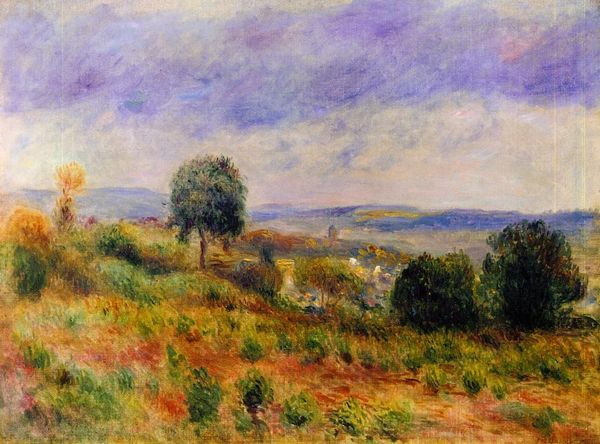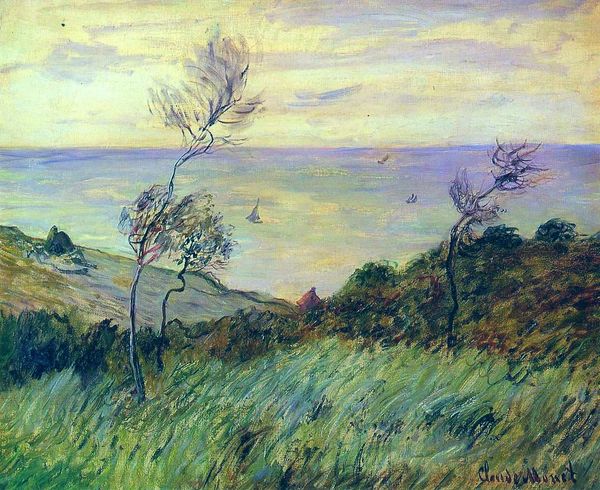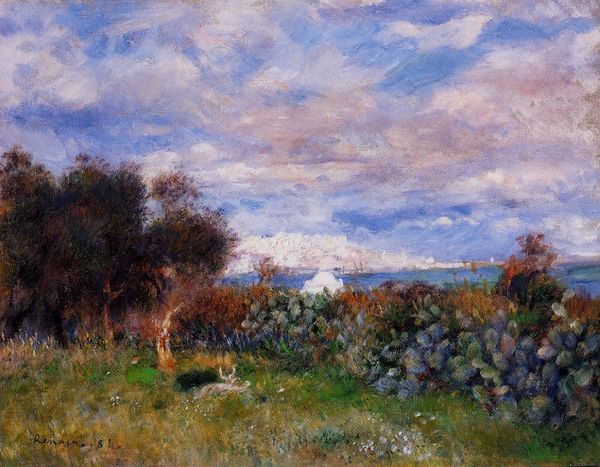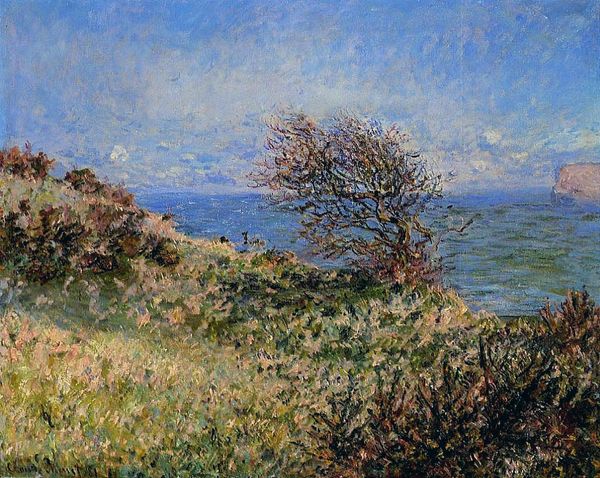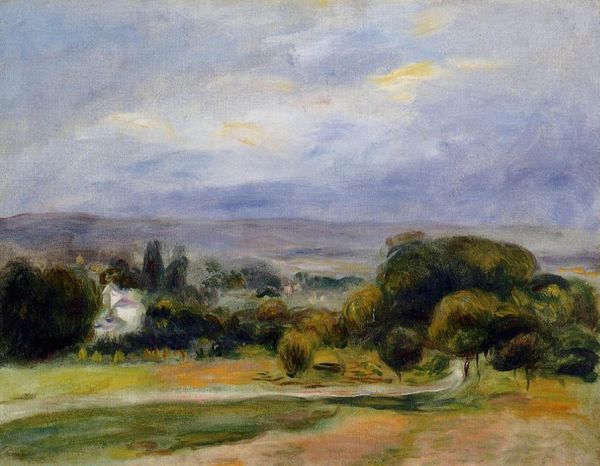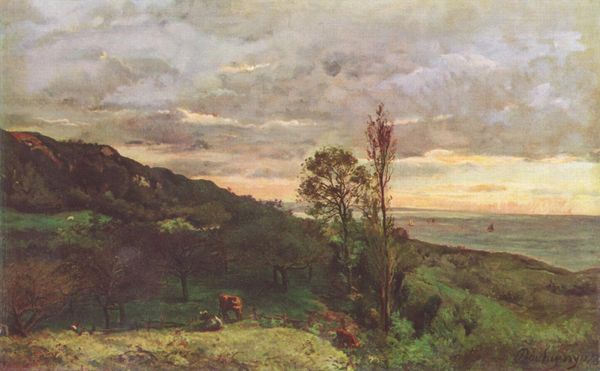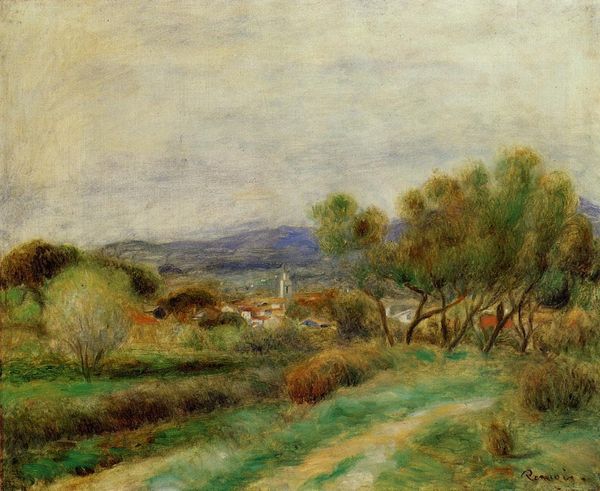
Copyright: Public domain
Curator: Looking at "The Distant Town," painted in 1910 by Rose O'Neill, I'm struck by how she blends plein-air techniques with elements of impressionism and even expressionism, using oil paint to capture this sprawling cityscape from afar. What’s your immediate response to this vista? Editor: Oh, wow, it feels so… dreamlike, almost as if this whole scene is a fading memory. That buttery sky blending into the hazy horizon – I can practically taste the melancholic air of a late summer afternoon. There's something really magical in its softness. Curator: I find it fascinating that O'Neill, best known for creating the popular comic strip character "Kewpie," also dedicated time to painting landscapes like this. It speaks volumes about the diversity within early 20th-century artistic expression and how artists often defied simple categorization, also what that did in terms of creating accessibility, for example. Editor: Exactly! It totally dismantles that idea that you can only be one kind of artist. Seeing her playful spirit peek through here, even amidst all the seriousness of academic art, makes the whole painting that much more relatable and endearing, doesn’t it? Though maybe I'm seeing too much of Kewpie in that swirl of the clouds… Curator: Perhaps! But looking closer at her brushwork, the way she renders light across the fields, reveals an artist deeply engaged with capturing fleeting moments. "The Distant Town," with its atmospheric perspective and focus on the interplay of light and color, resonates with the rise of impressionist ideals and plein air aesthetic values and what that has to say about modernity as an idea. Editor: It definitely pulls you in; that almost flattened perspective adds this incredible sense of vastness. It's as though we’re invited to share in the artist’s observation point on the hill—you can almost feel the breeze. Almost makes you wonder, what's *really* happening down there in the town? Curator: Considering O'Neill's engagement with social issues during her time, from women's suffrage to poverty, you almost get a glimpse of those undercurrents in her portrayal of this industrial-era urban center with all those emerging landscapes during the era. She wasn't afraid to use her art as a platform. Editor: I can definitely see that. Knowing that it makes the dreamy detachment of the scene even more compelling. Almost like she is acknowledging it without diving right into it. The work invites contemplation. What do you think? Curator: Yes, indeed. Her boldness shines through, prompting a rethinking about O’Neill beyond "Kewpie." Editor: It definitely makes you want to search her paintings even more now.
Comments
No comments
Be the first to comment and join the conversation on the ultimate creative platform.
